Purulia district is known for many things — from its food to the Chhau dance and its natural beauty, with hills and waterfalls that attract many visitors every year.
A lesser known part of Purulia are its heritage structures from history. The ruins of many temples and temple complexes dot the area and historical records suggest that the area was part of a Jain settlement between the 10th and 13th centuries that spanned Purulia and Bankura districts. Many of the ruined temples in Purulia today are Odisha Deul-style brick and stone temples from this period.
Scattered throughout Purulia and towns around are architectural remnants — the terracotta temples at Chelima and Achkoda, the rasmancha at Begun Kodor near Jhalda, the ancient temple at Krosjuri, and more.
Here are some locations worth a visit to explore ruins from the history of Purulia and Bengal.
Banda Deul
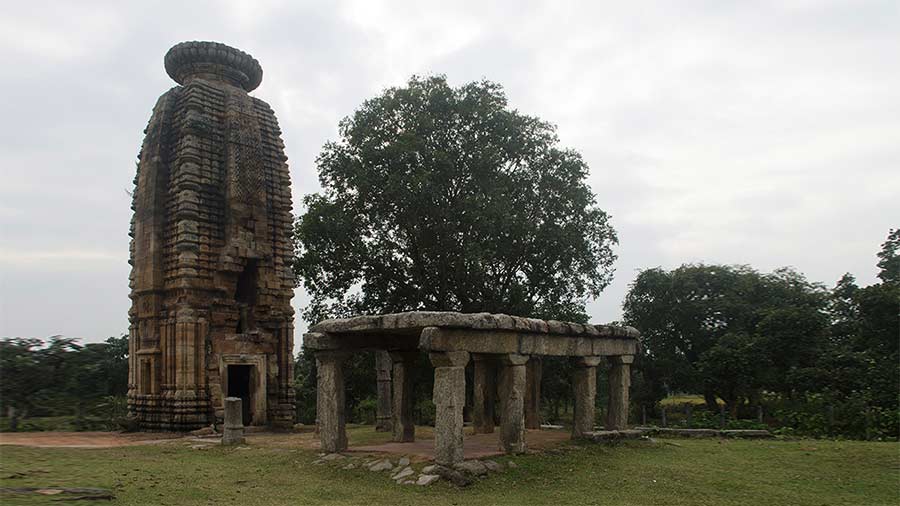
Rangan Datta
An ASI-protected, well-preserved monument, the Banda Deul is presumed to have been constructed between the 11th and 13th centuries. A 75-metre tall sandstone temple, it is built in the Rekha-deul style with a trirath projection and stands on a square base. Beautiful geometric and floral motifs adorn the facade. The temple has beautiful floral and geometric patterns on its outer surface. In front of the Banda Deul is a stone platform with a partially collapsed roof supported by still-standing stone pillars.
Location: Banda Deul is in Raghunathpur II Block, 35 km from Purulia town. It can also be visited from popular tourist spots like Garpanchkot and Baranti.
Deulghata
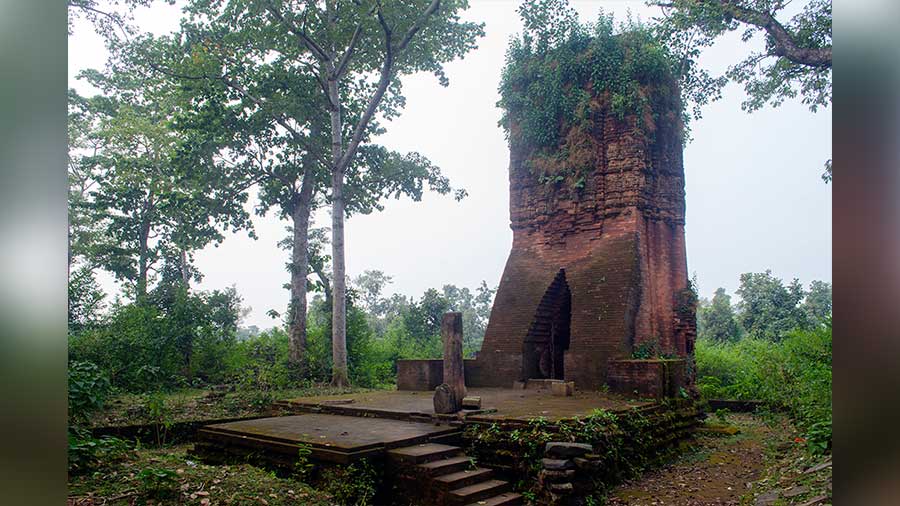
Rangan Datta
The two crumbling edifices of Deulghata are what remains of an 11th-century temple complex, The last of the temples collapsed in 2002, and now the complex area is dotted with ruins of the once-standing structures. The two remaining structures are brick deul-style temples with decorative brick ornamentation on their facades.

Rangan Datta
Many of the idols found intact among the ruins have been housed in a newly constructed building near the temple complex.
Location: Deulghata is about 30km west of Purulia town
Pakbirra
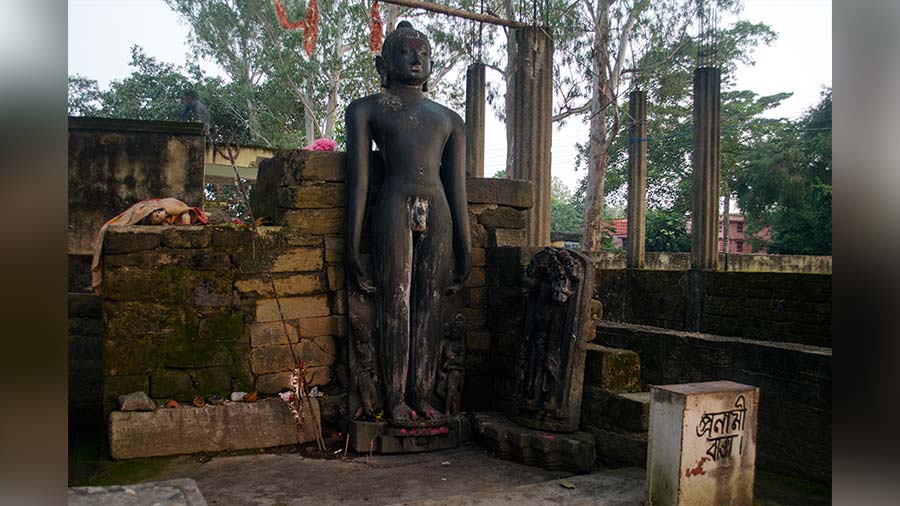
Rangan Datta
Pakbirra is known for the giant statue of a Jain Tirthankar that has been worshipped as Shiva. Wear over the years has made it difficult for experts to identify the Tirthankar — some say it is Sitalnath while others think the statue is of Padmaprabha. Three simple stone temples remain from what was once a large temple complex.
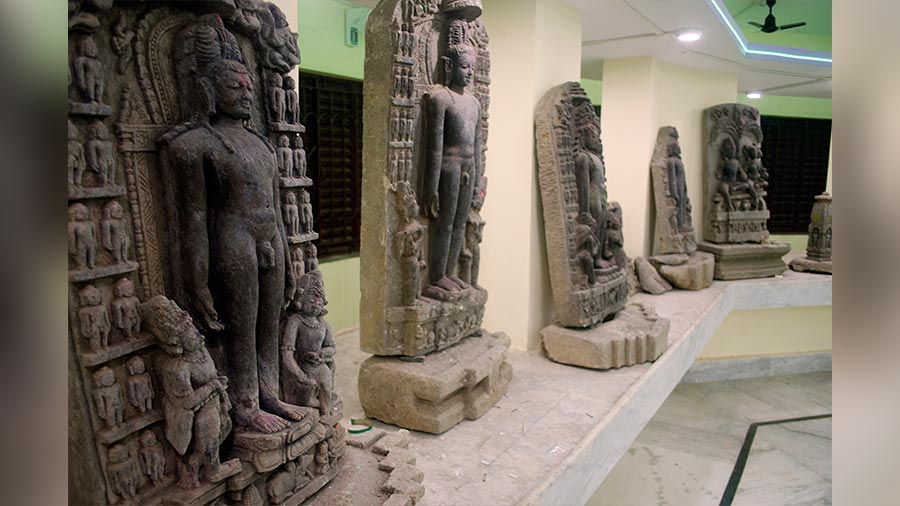
Rangan Datta
The complex also houses a large museum where many of the idols and broken temple parts are on display.
Location: About 50km southwest of Purulia town
Para
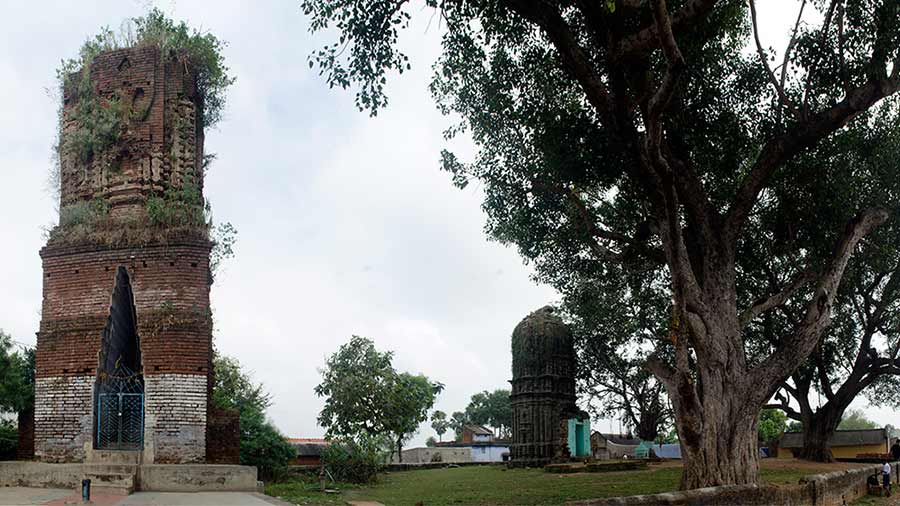
Rangan Datta
Para also houses two temples built in the deul architectural style, one in brick and one in stone. Both have elaborate motifs on their outer walls, though a lot of the details have sadly eroded over time or lost due to restoration. A short distance away from the twin temples stands a similar, broken brick temple.
Location: About 50km northeast of Purulia town. It can also be visited from popular tourist spots like Garpanchkot and Baranti.
Telkupi
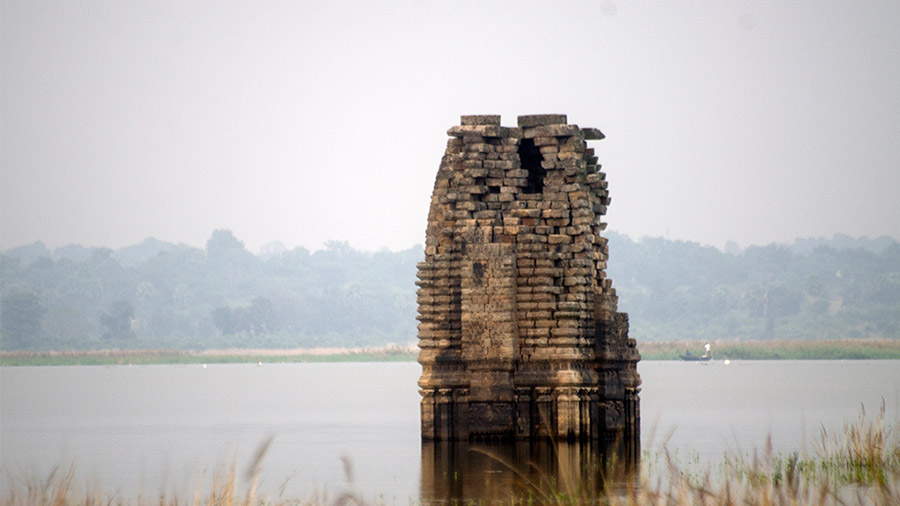
Rangan Datta
In the 1870s, Armenian-Indian engineer, archaeologist and photographer, Joseph David Beglar, explored the colonial-era Manbhum region of eastern India, now spread out between Bengal’s Purulia and Bihar’s Dhanbad districts. He reported the presence of 22 temples in Telkupi. Unfortunately, the reservoir created for the Panchet dam project in the 1950s led to many of these temples being submerged. Today. only three partially submerged temples can be seen.
Location: About 50 km northeast of Purulia town. It can also be visited from Garpanchkot and Baranti.
Deuli and Suisa
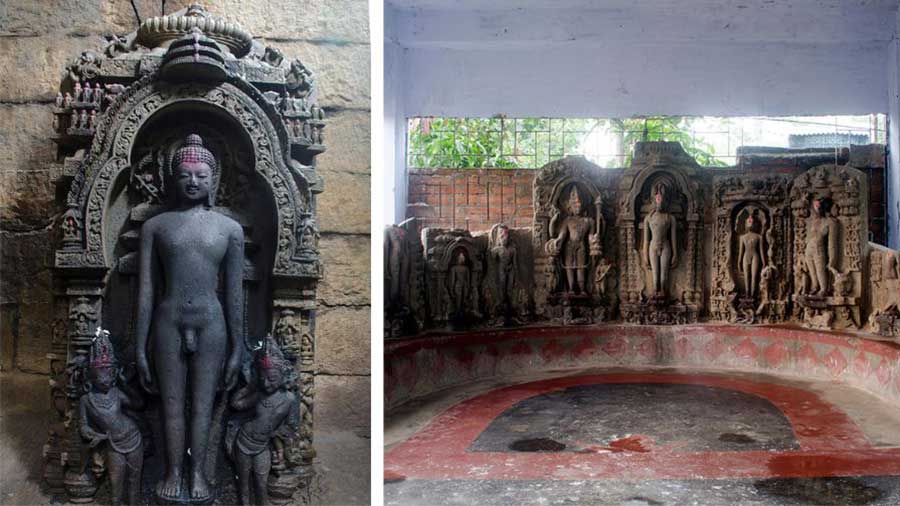
The idol at Deuli and the one-room museum at Suisa Rangan Datta
Deuli derives its name from the word deul, which is the name of the architectural style of brick and stone temples seen throughout Bengal and Odisha. Records suggest that Deuli once had several temples, but only portions of a temple complex remain at present, with more stone ruins than discernable structures. In the central area of the complex, is a three-foot-tall statue of a Jain Tirthankara, which is also worshipped as a Hindu god and called Irgunath by the locals. Since the statue has been under a covered area for centuries, it remains well preserved. Nearby, the village of Suisa has a small one-room museum, where statues found in the area are displayed.
Location: About 80km southeast of Purulia town
Garpanchkot and Jaichandi
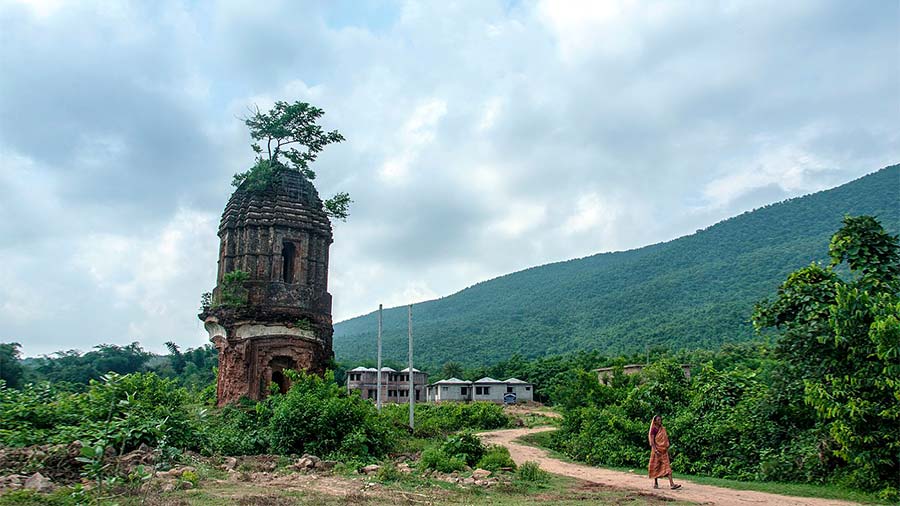
Wikimedia Commons
Compared to the other destinations, Garpanchkot and Jaichandi are better known. The word gar means fort, and the ruins of the fort of the king of Panchakot can be seen in the town along with a five-pinnacled Pancharatna Temple.
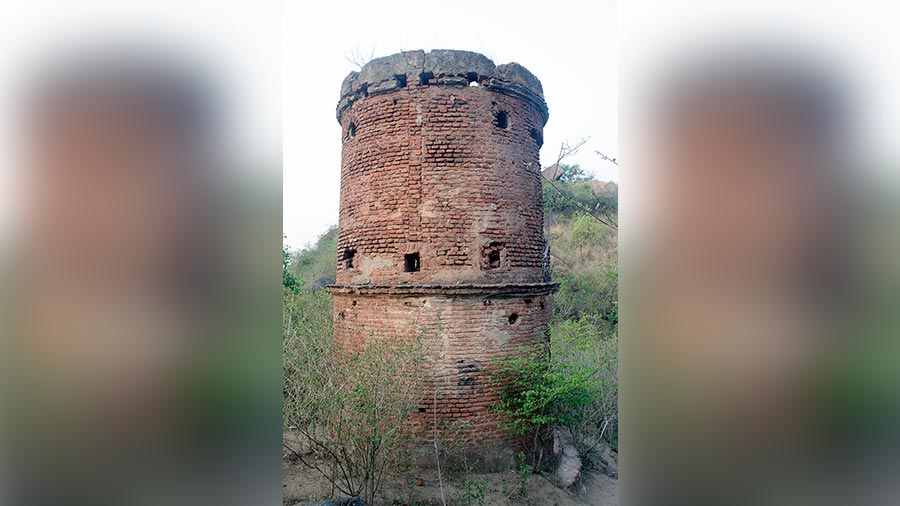
The ruins of the tower at Jai Chandi hill Rangan Datta
Nearby, 480 steps lead to the top of Jaichandi Hill, and along the way one can see the ruins of a tower that was once part of a signalling system connecting Kolkata to Chunar.
Location: About 45km from Purulia. Garpanchkot is near the other well-known spot of Baranti.
Rangan Datta is a mathematics and management teacher by profession and a travel writer and photographer by passion. He has been addicted to discovering off-beat places since his undergraduate days at St. Xavier's College. Blogging and contributing to Wikipedia are his other passions.


